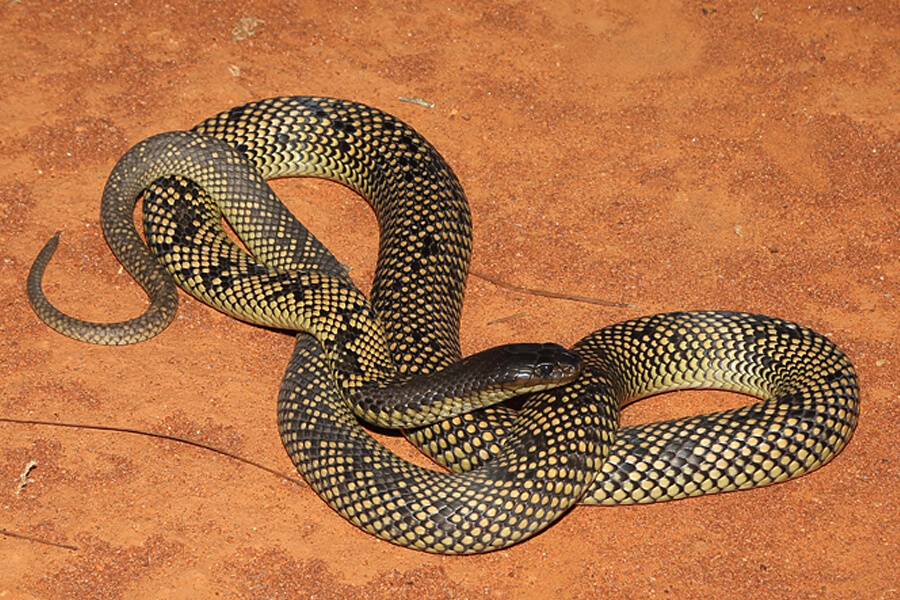Introduction
Australia, a land of varied wild animals, is home to lots of fascinating creatures, including serpents that can influence both admiration and anxiety. Among these serpents is the tiger snake, recognized for its striking look and online reputation as a venomous killer. As a result, one question often arises: Are tiger snakes venomous? This post will delve into the myths and realities surrounding tiger snakes, their habitat, behavior, clinical implications of their bites, and much more.
Are Tiger Snakes Venomous?
When it comes to the inquiry of whether tiger snakes are poisonous, the response is a resounding yes. Tiger snakes (Notechis scutatus) are without a doubt venomous and rank among the most unsafe serpents in Australia. Their poison includes powerful neurotoxins that can bring about paralysis and even fatality if not treated quickly.
While casualties from tiger serpent attacks have come to be much less typical because of improvements in medical therapy and antivenom accessibility, this does not diminish the requirement for care when coming across these reptiles. The possible results of a tiger serpent bite consist of serious discomfort at the website of the bite, swelling, nausea or vomiting, difficulty breathing, and neurological signs such as weak point or paralysis.
Types of Tiger Snakes
In Australia, there are several acknowledged subspecies of tiger serpents:
- Eastern Tiger Serpent (Notechis scutatus): Found largely in southeastern Australia. Tasmanian Tiger Serpent (Notechis scutatus): A subspecies discovered just in Tasmania. Black Tiger Snake: Understood for its darker coloration.
Each of these varieties has variations in size and actions however shares comparable poison characteristics.
The Environment of Tiger Snakes
Where Do They Live?
Tiger serpents are versatile creatures found throughout various environments throughout Australia. They typically populate seaside areas however can additionally be found in marshes, swamps, riversides, and woodlands. Their preference for moisture-rich settings makes them proficient swimmers; thus they grow near water bodies like lakes or marshes.
Geographical Distribution
- Southeastern Coast: Home to Eastern tiger snakes. Tasmania: Controlled by Tasmanian tiger snakes. Northern Regions: Where you might experience less frequently seen variants.
Habitat Preferences
Tiger snakes choose locations with abundant cover where they can conceal from killers while hunting for target. They commonly search little mammals, frogs, birds, and also fish-- making them flexible hunters within their What are the most venomous snakes in Australia ecological niche.
The Anatomy of a Tiger Snake
Physical Characteristics
Tiger snakes have distinctive physical attributes that separate them from other Australian reptiles:
- Coloration: Normally banded with yellow or light red stripes on a dark background. Size: They can mature to 2 meters long; however, typical sizes range in between 1.2 to 1.5 meters.
The distinct coloration serves both as camouflage against killers and while tracking prey in their all-natural habitat.
Find more informationBehavioral Traits
Understanding the behavioral patterns of tiger snakes is crucial for those living within their geographical variety:
- Nocturnal Activity: They are mostly active during the night but may also quest throughout the day. Defensive Behavior: When endangered, tiger snakes may hiss loudly or flatten their bodies-- a warning sign indicating they feel cornered.
Tiger Serpent Bite Symptoms
If bitten by a tiger snake, people must look for details symptoms that manifest not long after:
Severe localized pain Swelling around the bite area Nausea or vomiting Difficulty breathing Neurological signs and symptoms such as muscular tissue weakness
It's essential never to take too lightly these signs; instant clinical attention is vital following any snake bite incident.
First Help for Snake Bites
Immediate Activities After a Bite
Knowing how to respond promptly can conserve lives when taking care of prospective serpent bites:
Stay tranquility and still-- motion raises poison spread. Call emergency situation solutions immediately. Keep the influenced limb debilitated below heart level. Avoid cutting or drawing out venom; this old wives' tale might worsen conditions. Remove tight garments or jewelry near the bite site.First Aid Kit Essentials for Serpent Bites
A well-stocked emergency treatment package need to consist of products especially valuable in dealing with serpent attacks:
|Product|Purpose|| --------------------------------|-----------------------------------------------|| Sterilized bandages|To cover injuries|| Disinfectant wipes|To clean up around bite location|| Emergency situation get in touch with numbers|For quick access during emergency situations|| Compression bandage|To aid immobilize impacted limb|
Proper prep work can make all the distinction when an emergency situation strikes.
Fact vs Myth About Tiger Snakes
Myth 1: All Snakes Are Aggressive
Contrary to usual belief, not all serpent varieties display hostility in the direction of human beings. As a matter of fact, numerous would rather pull back than face us.
Myth 2: A Bite Always Leads to Death
While fatal bites do take place-- many thanks mainly to postponed healthcare-- the majority of bites are non-fatal if dealt with promptly with antivenom.
Myth 3: You Can Suck Out Venom
This extensively held belief is incorrect; trying to suck out venom just raises difficulties instead of minimizing them!
FAQs
1. Are infant tiger snakes extra harmful than adults?
Baby tiger serpents might have much less venom than grownups however usually supply bites without hesitation due to being more frightened.
2. How long does it take for signs to show up after a bite?
Symptoms typically appear within minutes however can often take hours depending upon variables like individual wellness conditions.

3. What ought to I do if I see a tiger snake?
Maintain distance! Stay clear of provoking it; most experiences finish without occurrence if you value their space.
4. Is there an antivenom available for tiger snake bites?
Yes! Antivenom exists particularly formulated for dealing with health problems caused by tiger snake bites-- it's vital to seek expert medical help https://privatebin.net/?46639af12c72d39a#Ae3swNA6SczVorKsBBRoRcw4Hnk6a5fByuvGgbfUCohL immediately!
5. Can I maintain a tiger snake as a pet?
Keeping any wild serpent species poses substantial threats due primarily to their reproduction behaviors & & nutritional requirements-- it's best left in nature!
6. How common are serpent bites in Australia?
Australia sees thousands of snakebite situations annual; however fatalities have actually decreased substantially many thanks mostly due enhanced understanding & & healthcare access!

Conclusion
In final thought, recognizing whether "Are Tiger Snakes Venomous?" brings significant ramifications for individual safety when communicating with these interesting reptiles native to Australia's varied ecological communities can not be overstated!

Arming ourselves with knowledge about these animals-- from their habitats and behaviors down via effective emergency treatment practices-- equips us towards more secure conjunction together with wildlife while mitigating dangers related to unexpected encounters!
By cultivating education and learning regarding our setting's ins and outs-- not simply concentrating only on worry-- we lead paths towards far better appreciation & & preservation initiatives profiting both mankind & & nature alike!